How to Identify Cheese
One of the first steps in becoming more knowledgeable about cheese and how to buy it is to learn how to identify the various kinds of cheese you come across.
At first, it may seem very confusing, but once you understand the different characteristics of a cheese, like type of milk, processing, texture, and so forth, it will help you discover what cheeses you prefer and why. Below are some important characteristics to help you make those decisions and identify cheese.
Type of milk:
Cow’s Milk Cheese
Cow’s milk cheese is a versatile and beloved dairy product that has been a culinary staple for centuries. Produced from cows’ milk, this cheese comes in various textures, flavors, and varieties. From the mild and creamy Brie to the sharp and aged Cheddar, cow’s milk cheese caters to diverse palates.
Known for its rich and nutritious composition, cow’s milk provides a solid foundation for cheese-making. The curdling process separates the whey from the curds, and the subsequent aging or ripening develops the distinctive characteristics of each cheese. Cow’s milk cheese adds depth and complexity to countless recipes, whether enjoyed independently, paired with fruits, or melted into dishes.
Its widespread availability and consistent quality make cow’s milk cheese popular worldwide. From the traditional European classics to innovative artisanal creations, this dairy delight remains a timeless indulgence for food enthusiasts and a key ingredient in global gastronomy.
Examples include: Cheddar, Brie, Gouda, Parmesan, Blue Cheese, Swiss, Havarti, Provolone, Colby, and Monterey Jack.
Goat’s Milk Cheese
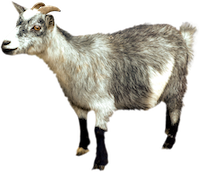 Goat’s milk cheese is a delectable and distinctive dairy product that stands out for its unique flavor profile and creamy texture. Crafted from goats’ milk, this cheese boasts a tangy and sometimes earthy taste, offering a delightful alternative to cow’s milk varieties. Goat’s milk, naturally lower in lactose and with smaller fat globules, contributes to the cheese’s characteristic tanginess and digestibility.
Goat’s milk cheese is a delectable and distinctive dairy product that stands out for its unique flavor profile and creamy texture. Crafted from goats’ milk, this cheese boasts a tangy and sometimes earthy taste, offering a delightful alternative to cow’s milk varieties. Goat’s milk, naturally lower in lactose and with smaller fat globules, contributes to the cheese’s characteristic tanginess and digestibility.
From the soft and spreadable Chèvre to the firm and crumbly Bucheron, goat’s milk cheese encompasses a wide spectrum of textures and tastes. The cheese-making process involves coagulating the milk, forming curds, and aging the cheese to develop its distinct characteristics.
Celebrated for its versatility, goat’s milk cheese pairs wonderfully with fruits, nuts, and honey, adding a sophisticated touch to salads, appetizers, and desserts. As a favorite among culinary enthusiasts, goat’s milk cheese continues to captivate palates with its unique and nuanced flavors, making it a cherished component of diverse cuisines worldwide.
Examples include: Chèvre, Bucheron, Raw Milk Gouda, Caprino, and Montrachet
Sheep’s Milk Cheese
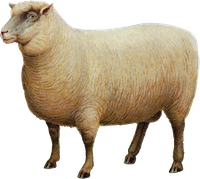 Sheep’s milk cheese is a culinary gem celebrated for its rich and complex flavors, elevating it to a distinguished status in the world of artisanal cheeses. Produced from the milk of sheep, this cheese offers a unique taste profile characterized by a sweet and nutty essence with a hint of earthiness. The higher fat content and distinct composition of sheep’s milk contribute to the cheese’s creamy texture and exceptional mouthfeel.
Sheep’s milk cheese is a culinary gem celebrated for its rich and complex flavors, elevating it to a distinguished status in the world of artisanal cheeses. Produced from the milk of sheep, this cheese offers a unique taste profile characterized by a sweet and nutty essence with a hint of earthiness. The higher fat content and distinct composition of sheep’s milk contribute to the cheese’s creamy texture and exceptional mouthfeel.
From the velvety Pecorino to the robust Roquefort, sheep’s milk cheese spans a broad spectrum of textures and tastes. The cheese-making process involves coagulating the milk, forming curds, and aging to perfection, producing a product prized for its depth and intensity.
Sheep’s milk cheese pairs wonderfully with fruits, honey, and crusty bread, offering a delightful gastronomic experience. Adored by connoisseurs and chefs alike, sheep’s milk cheese remains a testament to the artistry of cheese-making, captivating palates with its nuanced flavors and culinary versatility.
Examples include: Pecorino Romano, Manchego, Roquefort, Feta, Ossau-Iraty, and Fiore Sardo.
Combination Milk Cheese
Combination milk cheeses, also known as mixed milk cheeses, are crafted from a blend of milk from different animal sources. This can include cow, goat, and sheep milk combinations, creating a cheese that showcases a unique fusion of flavors and textures. Blending milk allows cheese artisans to experiment with and balance the characteristics of each milk type, resulting in a product that is often more complex and intriguing.
Mixed-milk cheeses can range from soft and tangy to firm and nutty, depending on the specific proportions and types of milk used. Some cheese varieties, such as certain artisanal cheeses or traditional European styles, are intentionally crafted with a combination of milk to achieve a well-balanced and distinctive taste.
These cheeses offer a diverse and exciting alternative to single-milk cheeses, appealing to those who appreciate the nuanced qualities that each type of milk brings to the final product.
Examples include: Humboldt Fog, Ragusano, Pecorino Toscano Stagionato, and Valdeon.
Processing:
Fresh
This cheese is usually unripened and packed into tubs or crocks. It is a culinary canvas with its mild and delicate flavor. This unaged delight, featuring a moist and soft texture, enhances salads, pairs well with fruits, and elevates desserts. Perfect for spreading or crumbling, fresh cheese captures simplicity and versatility in every delicious bite.
Ripened But Unpressed
These cheeses undergo maturation without external pressure. These wheels, aged with care, boast complex flavors and supple textures. Quick-ripened (1 month) by surface molds; allowed to drain naturally.
Uncooked But Pressed
These cheeses undergo pressing without heat. This method retains a creamy texture and subtle sweetness. They are shaped by careful curd handling and provide a delightful balance of flavors, making them versatile for both snacking and culinary creations. They are pressed and ripened from 2 to 18 months (Gouda)
Cooked & Pressed
These cheeses refer to cheeses that undergo a specific production process involving heating and pressing. This method contributes to developing certain textures, flavors, and characteristics in the final cheese. They are cooked, then molded, heavily pressed, and then ripened for up to 4 years
Texture:
Very Soft
Very soft textured cheeses are characterized by a high moisture content and a delicate, often spreadable, consistency. These cheeses have a creamy and smooth texture, making them ideal for spreading on crackers, bread, or incorporating into recipes. The soft texture is often a result of minimal aging and a higher moisture content, which gives the cheese a luscious, melt-in-the-mouth quality.
Examples include Burrata, Cottage Cheese, Mascarpone, Cream Cheese, and Ricotta.
Soft
Soft-textured cheese, celebrated for its lush and creamy consistency, encompasses a diverse array of delectable options in the world of dairy delights. This category includes cheeses with a high moisture content, resulting in a supple, often spreadable texture. Their flavors range from mild and buttery to tangy and earthy, offering a broad palette for culinary creativity.
Perfect for spreading on crackers, crusty bread, or fruit, soft-textured cheeses also elevate desserts and salads. Their versatility extends to both sweet and savory pairings, making them essential components in various cuisines.
Whether enjoyed on their own or incorporated into diverse recipes, soft-textured cheeses provide a luxurious and indulgent experience, enriching the gastronomic landscape with their delightful textures and nuanced flavors.
Examples like Brie, Camembert, and fresh goat cheese showcase the velvety, smooth interiors that define soft cheeses.
Semi-Soft
These cheeses occupy a delightful middle ground in the spectrum of cheese textures, offering a balance between creaminess and firmness. They are often versatile and approachable and include varieties like Havarti, Fontina, and Gouda. With a higher moisture content than harder cheeses, they boast a pliable and yielding texture that ranges from supple to slightly crumbly. The flavors of semi-soft cheeses are diverse, encompassing mild and buttery notes in Havarti, nutty nuances in Gouda, and a robust, earthy profile in Fontina.
Semi-soft cheeses are prized for their meltable qualities, making them excellent choices for sandwiches, fondues, and melting atop burgers. Their adaptability extends to both casual and gourmet settings, appealing to a broad range of palates. The appeal of semi-soft cheeses lies not only in their approachability but also in their ability to bring a delightful textural harmony and rich flavor complexity to a variety of culinary creations.
Other examples include Cashel Blue, Chabichou du Poitou, Morbier.
Semi-Hard – Cooked and Pressed
These occupy a delightful middle ground between the creamy textures of softer cheeses and the firmness of harder varieties. These cheeses undergo a longer aging process, allowing them to develop distinct flavors and textures.
Semi-hard cheeses are often chosen for their excellent meltability, making them ideal for fondues, sauces, or topping dishes. Their nuanced flavors and diverse textures add depth to various culinary creations, ensuring a place for them on cheese boards, sandwiches, and countless recipes.
Examples such as Gruyère, Emmental, and Cheddar showcase their versatility with textures ranging from pliable to crumbly. Gruyère, with its sweet and nutty profile, boasts a smooth, dense texture, while Emmental, known for its characteristic holes, offers a firm and slightly elastic consistency. Cheddar, a beloved classic, spans a spectrum from mild and creamy to sharp and crumbly.
Hard Cheese
They represent the pinnacle of cheese craftsmanship, celebrated for their dense textures, concentrated flavors, and extended aging processes. Characterized by low moisture content and a crumbly or granular texture, hard cheeses develop intense, complex flavors as they mature.
Parmigiano-Reggiano, the “King of Cheeses,” is renowned for its hard, granular texture and rich, umami flavor. Pecorino Romano, an Italian sheep’s milk cheese, boasts a robust, salty taste and a firm texture. Aged Gouda, originating from the Netherlands, transforms into a hard cheese with caramelized notes and crystalline textures.
They are also revered for their versatility, whether grated over pasta, enjoyed on a cheese board, or savored in slivers alongside wine. The meticulous aging process imparts these cheeses with depth and character, elevating them to timeless culinary treasures.
Examples like Parmigiano-Reggiano, Pecorino Romano, Petit Basque, and aged Gouda showcase the artistry and dedication of producing these cheeses.
Shapes: 6 basic shapes:
Sphere Shaped
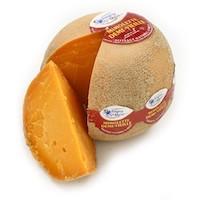 Sphere-shaped cheeses present a visually appealing and often whimsical aspect to the world of cheese. These cheeses, crafted into round or ball-like forms, range from fresh and soft to aged and firm varieties.
Sphere-shaped cheeses present a visually appealing and often whimsical aspect to the world of cheese. These cheeses, crafted into round or ball-like forms, range from fresh and soft to aged and firm varieties.
Examples include Baby Brie, Mini Babybel, and certain fresh goat cheese pearls. The shape influences the cheese’s presentation, creating a delightful centerpiece for cheese boards or appetizer platters.
The convenience of portioning and serving makes sphere-shaped cheeses popular for snacking or entertaining. Their diverse textures and flavors add a playful element to culinary creations, with options ranging from creamy and mild to tangy and robust.
Whether enjoyed on their own, paired with fruits and crackers, or incorporated into various dishes, sphere-shaped cheeses contribute a touch of elegance and charm to the world of cheese appreciation.
Rectangular Shaped
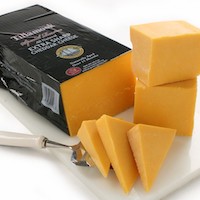 Rectangular-shaped cheeses bring a sense of order and structure to the world of cheese, showcasing a departure from traditional rounds. Examples such as sliced American cheese, blocks of Cheddar, and packaged feta rectangles are a testament to the versatility and convenience of this geometric form. Sliced cheeses, often found in deli counters, provide a practical solution for sandwiches and quick snacks, while blocks offer flexibility for grating, slicing, or cubing in culinary creations. Feta rectangles, pre-packaged and ready for consumption, exemplify the adaptability of this shape. The clean lines and defined edges contribute to ease of use and lend themselves to artistic cheese plating. Rectangular-shaped cheeses seamlessly blend utility with aesthetics, making them a staple in kitchens and on cheese boards alike.
Rectangular-shaped cheeses bring a sense of order and structure to the world of cheese, showcasing a departure from traditional rounds. Examples such as sliced American cheese, blocks of Cheddar, and packaged feta rectangles are a testament to the versatility and convenience of this geometric form. Sliced cheeses, often found in deli counters, provide a practical solution for sandwiches and quick snacks, while blocks offer flexibility for grating, slicing, or cubing in culinary creations. Feta rectangles, pre-packaged and ready for consumption, exemplify the adaptability of this shape. The clean lines and defined edges contribute to ease of use and lend themselves to artistic cheese plating. Rectangular-shaped cheeses seamlessly blend utility with aesthetics, making them a staple in kitchens and on cheese boards alike.
Wheel Shaped
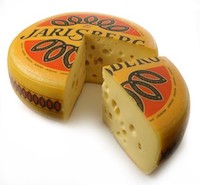 With their iconic circular form, wheel-shaped cheeses stand as a testament to the craftsmanship and tradition of cheese-making. Examples like Gouda, Brie, and traditional Swiss cheeses exemplify the wheel shape, offering a visually appealing centerpiece for cheese enthusiasts.
With their iconic circular form, wheel-shaped cheeses stand as a testament to the craftsmanship and tradition of cheese-making. Examples like Gouda, Brie, and traditional Swiss cheeses exemplify the wheel shape, offering a visually appealing centerpiece for cheese enthusiasts.
Gouda wheels, whether young and mild or aged and robust, showcase the Dutch artistry in cheese production. Brie wheels, enveloped in a velvety white rind, captivate with their creamy textures and delicate flavors.
Traditional Swiss cheeses, including Emmental and Gruyère, present large wheels with characteristic holes, embodying the rich heritage of Alpine cheese-making. These wheel-shaped cheeses often become the focal point of cheese boards, allowing for an exploration of diverse textures and tastes from the outer rind to the heart of the wheel. The wheel shape encapsulates the timeless allure and artistry ingrained in the world of cheese.
Square Shaped
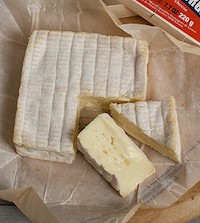 Square-shaped cheeses present a departure from the traditional round or wheel forms, offering a geometrically distinct and modern aesthetic to the world of cheese. Examples such as square feta blocks, portions of Gouda or Cheddar, and artisanal square-shaped cheeses exhibit the versatility of this shape.
Square-shaped cheeses present a departure from the traditional round or wheel forms, offering a geometrically distinct and modern aesthetic to the world of cheese. Examples such as square feta blocks, portions of Gouda or Cheddar, and artisanal square-shaped cheeses exhibit the versatility of this shape.
Square feta, often enjoyed in Greek salads, showcases a crumbly texture and a tangy flavor. When cut into squares, portions of Gouda or Cheddar provide convenient and uniform servings for snacks or cooking. Artisanal square-shaped cheeses, often found in specialty cheese shops, highlight the creativity and innovation of cheese makers.
The square shape not only adds a contemporary touch to cheese presentations but also enhances practicality in slicing, packaging, and serving, making it a distinctive and functional choice in the diverse world of cheese.
Rolled Shaped
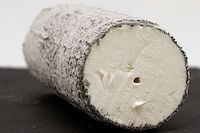 Roll-shaped cheeses bring a distinctive and often whimsical presentation to the world of cheese, deviating from conventional blocks or wheels. Examples like goat cheese logs, cheese balls, and cylindrical cheeses like Caciocavallo showcase the versatility of this form.
Roll-shaped cheeses bring a distinctive and often whimsical presentation to the world of cheese, deviating from conventional blocks or wheels. Examples like goat cheese logs, cheese balls, and cylindrical cheeses like Caciocavallo showcase the versatility of this form.
Goat cheese logs, often coated in herbs or spices, offer a delightful mix of creamy texture and tangy flavor, perfect for spreading or slicing. Whether coated in nuts or herbs, cheese balls provide a convenient and visually appealing appetizer option.
Caciocavallo, an Italian stretched-curd cheese, is traditionally shaped into a cylindrical form and hung to age, resulting in a firm texture and nutty taste. Roll-shaped cheeses elevate the aesthetic appeal of cheese platters and offer diverse textures and flavors, contributing to a playful and varied cheese experience.
Drum Shaped
Drum-shaped cheeses are molded or naturally formed into a round, cylindrical shape resembling a drum. This shape varies in size and can be relatively large or smaller, depending on the cheese type and production method. Some cheeses are intentionally crafted to have a drum shape, while others may naturally take on this form during the aging or pressing process.
Examples include: Manchego, Gouda Wheels, Fontina, and Tete de Moine.
Color:
The color of cheese can vary widely, influenced by factors such as the type of milk used, the presence of certain additives or flavorings, and the aging process. Here are some common color ranges found in different types of cheese:
- White: Fresh cheeses, such as mozzarella, feta, and ricotta, often have a naturally white or creamy color.
- Yellow to Orange: Many cheeses, particularly those made from cow’s milk, have a natural yellow or orange hue. This color comes from the presence of beta-carotene, a compound found in grass consumed by cows. Cheddar, Colby, and many American cheeses fall into this category.
- Ivory to Pale Yellow: Cheeses like Swiss, Gruyère, and Emmental often have an ivory to pale yellow color. The aging process and the type of milk used contribute to these shades.
- Off-White to Beige: Brie, Camembert, and some soft-ripened cheeses can have an off-white to beige exterior with a creamy interior.
- Blue or Greenish-Gray: Blue cheeses, such as Roquefort, Stilton, or Gorgonzola, are characterized by the presence of mold cultures, giving them a distinct blue or greenish-gray color.
- Yellow-Orange with Specks: Some cheeses, like Mimolette, feature a deep orange color due to adding annatto, a natural dye. The exterior of Mimolette is often pitted and speckled.
- Brown Rind: Washed-rind cheeses, such as Limburger or Munster, can have a brownish-orange rind due to the bacteria used in the washing process.
- Black: Some cheeses, like Blacksticks Blue, have a distinctive black or dark gray appearance due to the presence of edible charcoal or ash in the production process.
These color variations contribute to the visual diversity of cheese and often correspond to differences in flavor, texture, and aroma. It’s important to note that these color ranges are generalizations, and individual cheeses may vary within these categories.
Rinds:
Dry Natural Rinds
A dry natural rind cheese is a type of cheese that develops a natural, protective outer layer during aging. This rind forms without adding wax, oils, or other external coatings. Instead, it occurs naturally as the cheese is exposed to the surrounding environment.
Creating a dry natural rind involves the interplay of moisture, air, and microorganisms on the cheese’s surface. The outer layer dries out as the cheese ages, forming a protective barrier. This process allows certain beneficial molds and bacteria to flourish on the rind, contributing to the cheese’s flavor and texture.
Many traditional and artisanal cheeses are crafted with dry natural rinds, including aged varieties like Parmigiano-Reggiano, Pecorino Romano, and certain cheddars. The rind can range in appearance from rough and textured to smoother, and it often plays a role in preserving and enhancing the flavor of the cheese.
Soft White Bloomy Rinds
A soft white bloomy rind cheese has a delicate, edible, and velvety white mold on its surface. This type of mold is typically a penicillium species, creating a thin, powdery layer on the outside of the cheese during the aging process. This characteristic gives the cheese its distinctive appearance and contributes to its unique texture and flavor profile.
The term “bloomy rind” comes from the exterior’s blooming, or softening, as the mold matures. This process creates a creamy and gooey texture beneath the rind, allowing the cheese interior to remain firmer.
Examples include: Brie, Camembert, Brillat-Savarin, Saint Andre, and Explorateur.
A washed rind cheese is a type of cheese that undergoes a specific affinage (aging) process where the surface of the cheese is regularly washed or rubbed with a liquid, often a brine solution, beer, wine, or spirits. This washing process encourages the growth of specific bacteria, molds, and yeasts on the cheese’s surface, resulting in a distinctive rind. The washing helps to develop unique flavors, textures, and aromas in the cheese.
Examples include Epoisses, Taleggio, Munster, Raclette, and Limburger.

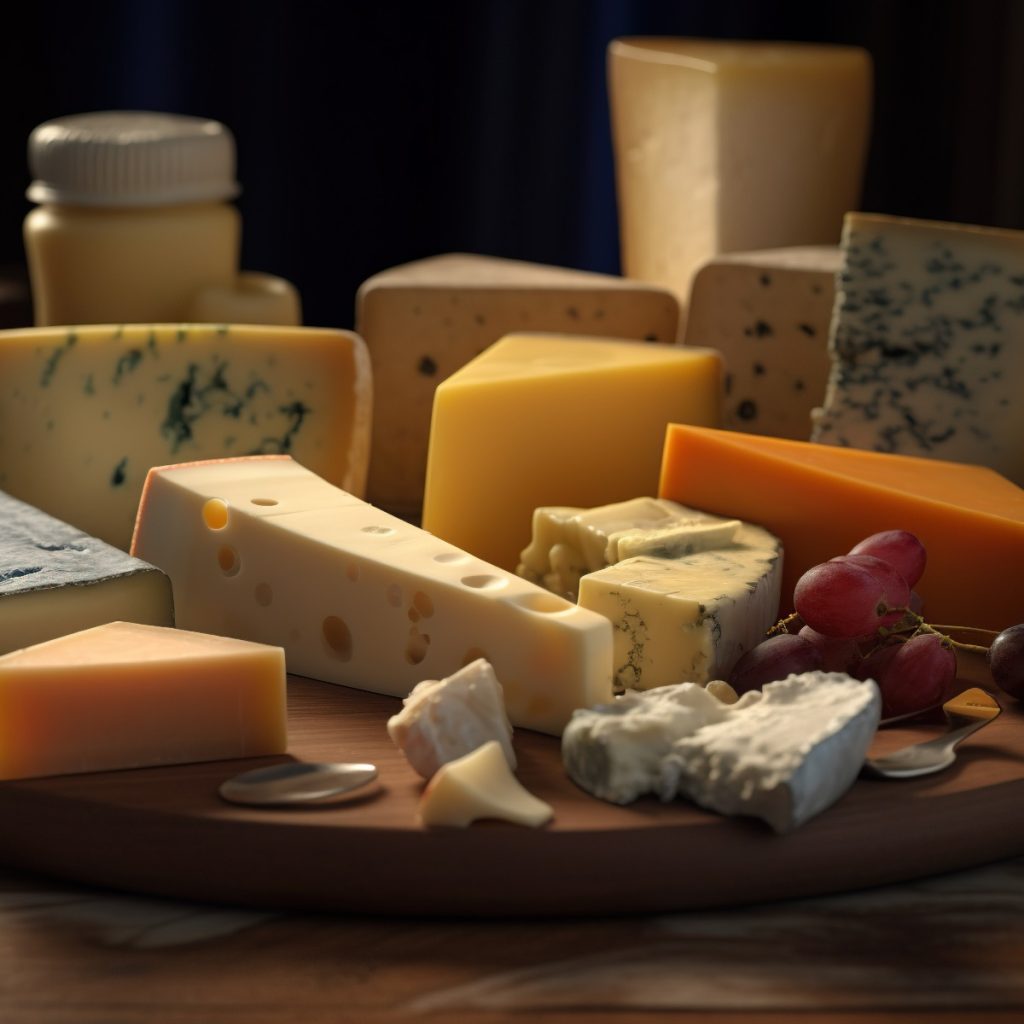


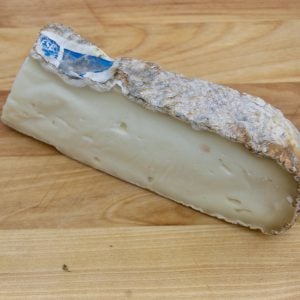
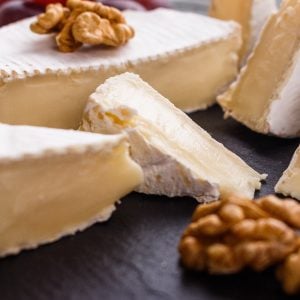

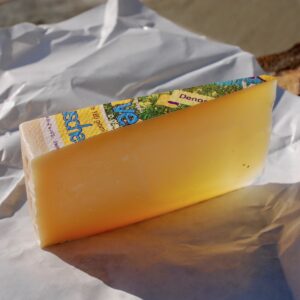
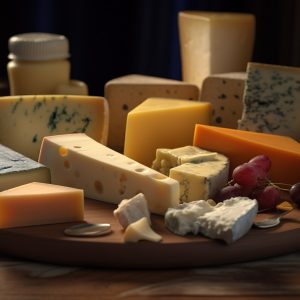
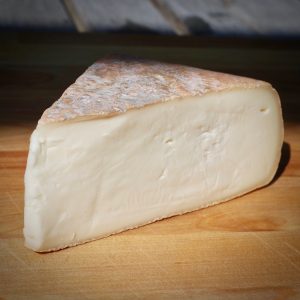




4 Responses
It would be great to have chart of the most popular cheeses, with their taste, and texture – what makes that cheese good to cook with… Maybe even what types of recipes they are good in.
(Kind of like a spice chart)
What a great idea! I’ll have to work on it. I think there may be a bigger demand for a chart listing the different types of cheeses, what they taste like, texture and what wines go well with them. I don’t find myself cooking with that many different cheeses. What’s everybody’s take on this?
A chart is a great idea! I’d be more interested in the cooking characteristics of different cheeses than in wine pairings, even though I don’t cook with cheese often. Even though are certain generalities and particular pairs that appeal to most palates, wine-and-cheese pairing still comes down to individual preferences. I’d trust my own palette before I’d trust a chart. But whether a cheese I’ve tasted but haven’t cooked with gets stringy or grainy or smooth when it melts is objective information that I could use.
Another great idea to create a chart for cooking characteristics of different cheeses. Of course different pairings depend on personal preferences but there may be some people who need a place to start, get some ideas before they come to their own conclusions. It might help if they knew tannic red wines go better with rich, aged cheeses and sweet wines go better with salty cheeses because of their characteristics, not because of preferences. I like your idea and will look into seeing what I can come up with. Thanks